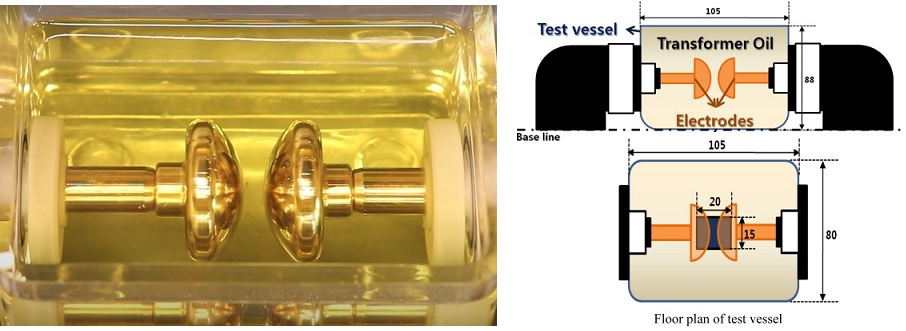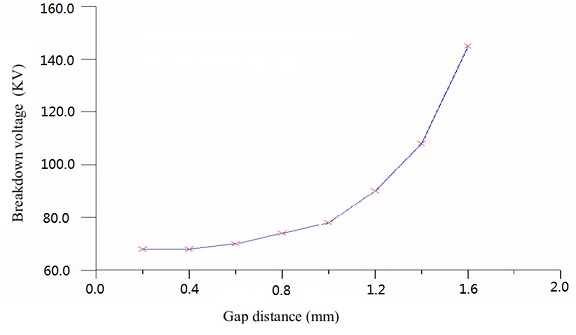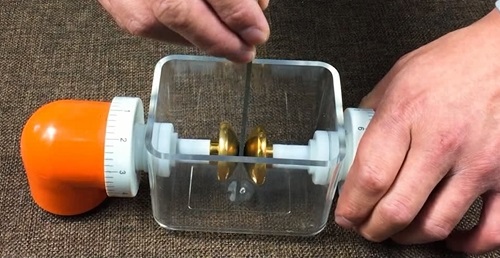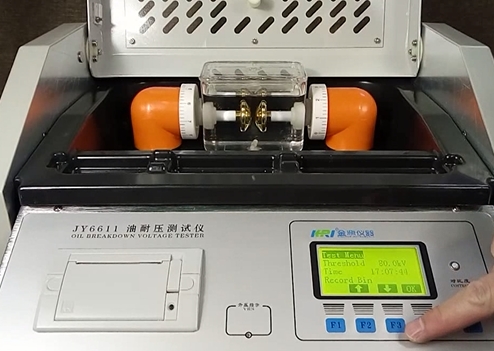The JY6611 Insulating oil breakdown voltage tester adopts a completely new electromagnetic compatibility (EMC) concept designed to prevent tester crashes during testing and ensures it can operate effectively in high magnetic fields.
The JY6611 also uses advanced voltage breakdown control technology, which keeps breakdown energy at a very low level. This prevents contamination of the oil sample during testing and ensures the test results are accurate and reliable.
The unique advantage of this tester lies in its built-in electronic boost system. The voltage regulation power supply uses an electronic inverter sine wave generator, providing accurate voltage output with high waveform quality. It is not affected by grid voltage fluctuations or waveform distortion, making the test data more accurate and efficient. The built-in advanced insulating material and heat dissipation system ensure that the step-up transformer remains stable and reliable, allowing the tester to withstand long-term high-voltage breakdown tests. This design protects operator safety and extends the service life of the tester
JY6611 Insulating oil BDV tester Feature:
1. Reliable testing processing:JY6611 oil cup is made by new material with high strength and long service life to avoid fragile and leakage problem during testing.

4. Complete protection system:
JY6611 has a variety of protection devices which will make sure the safety of operator and tester itself in accident like inferior oil breakdown voltage and empty cup breakdown.
5. Multiple international testing standards
Fully automatic test sequences for 12 common test standards around the world and spot tests(Standard: ASTM D877 & ASTM D1816, IEC 60156)
6. International universal stainless steel calipers
Precise adjustment of standard electrode distances
7. Overall shielding technology
Perfect overall shielding technology can prevent all sources of electronic interference to ensure a pure test environment
8. Provide multilingual technical instructions
Provide English operation page and operation instructions in 15 languages


TECHNOLOGY SPECIFICATION:
|
Type |
JY6611 oil break down voltage(BDV) tester |
|
Output voltage |
0~80kV/100kV |
|
Minimum resolution |
0.1kV |
|
Accuracy |
±(2%*Reading±0.2kV) |
|
Voltage raise speed |
1.0 /2.0 /3.0 kV/s for option |
|
Switch-Off time on breakdown, ms |
≤1ms |
|
Experimental times |
1~6 for option |
|
Programmed test standard |
IEC60156/ASTM D877/ASTM D1816/VDE0370 |
|
Memory for result |
30 group |
|
Volume of the oil cup |
400ml & 200ml |
|
Gap between the poles |
2.5 mm (Electrode gap is adjustable) |
|
Temperature in operation |
0~40℃ |
|
Relative humidity |
≤80%RH, No forming dew |
|
Power supply in operation |
AC220V±10%, 50Hz±1% |
|
Volume / Weight |
Length 385 mm Width 300 mm Height 360 mm / 22kgs |
2. Use a clean and dry oil sample bottle to take oil samples at the sampling port of the transformer (the sampling port should be cleaned, dried and processed), insulating oil should be cooled down to 27°C temperature before testing.

3. Rinse the oil cup three times with the sample oil. Use a gauge to adjust the distance between the electrodes of the oil cup (2.5 mm), then slowly inject the test oil into the oil cup along the stirring glass rod until it is ≥10 mm above the electrode, then cover the glass cover and let it stand still for 15 minutes to make the air bubbles in the oil overflow.

4. Then turn on the power supply of BDV tester, and increase the voltage evenly at a speed of 3~5kV/s until the oil cup electrode breaks down, and (KOF overcurrent trip) disconnect the power supply.


6. The breakdown should be repeated six times in total, normally the first time is not calculated, and the average value of the five breakdowns is taken as the final oil pressure resistance value.

7. If insulating oil BDV value is above 30 KV, transformer oil is good.







transformer oilltage breakdown t